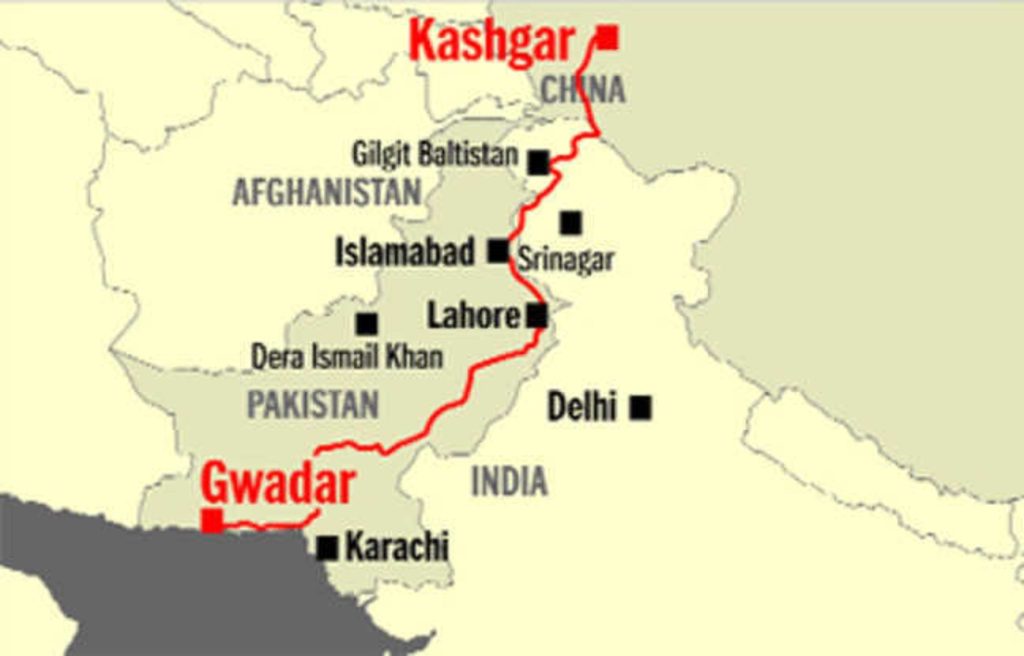CPEC to CPAEC: Aspiration to Actualisation
DIDPress: In an article for Express Tribune, Reza Muhammad argues that China’s Belt and Road Initiative (BRI), the Iran-Afghanistan-Central Asia-China corridor, and the proposed China-Pakistan-Afghanistan Economic Corridor (CPAEC) could complement one another, yielding multiplied benefits—including job creation, poverty reduction, women’s empowerment, environmental protection, and enhanced regional peace and stability.

Afghanistan’s Potential Integration into CPEC
Should Afghanistan join the China-Pakistan Economic Corridor (CPEC), the intertwined destinies of the Afghan and Pakistani people could drive socio-economic development, improve bilateral relations, and foster regional stability. This was the focus of my doctoral research (2017–2021). While Afghanistan’s participation seemed unlikely then, key developments have since revived hope:
1. 2019 Trilateral Meeting (China-Afghanistan-Pakistan): The September 8, 2019, summit agreed to construct the Peshawar-Kabul Highway under the China-Afghanistan-Pakistan Plus (CAPP) framework, a step toward linking Afghanistan to CPEC.
2. 2020 China-Iran Comprehensive Cooperation Pact: A 25-year, $400 billion deal to develop Chabahar Port and integrate the Iran-Afghanistan-Central Asia transport corridor into BRI, alongside energy, industrial, and military partnerships.
The recent trilateral meeting in Beijing has further buoyed prospects. Pakistan’s Deputy Prime Minister Ishaq Dar confirmed China’s support for the Peshawar-Kabul corridor, making Afghanistan’s CPEC accession likelier than ever.
From CPEC to CPAEC: A Regional Game-Changer
Afghanistan’s inclusion could transform CPEC into the China-Pakistan-Afghanistan Economic Corridor (CPAEC)—a nexus connecting Eurasian communities through economic collaboration, unlocking shared prosperity.
• Synergies with BRI: Combined, BRI’s Central Asia corridors and CPAEC could amplify outcomes: 94% of survey respondents in my study agreed such interdependence would boost socio-economic growth and stability.
• Afghanistan’s Urgent Need: Ravaged by foreign interventions and internal strife, Afghanistan requires rapid development. Immediate solutions include transit trade expansion and industrial zones along CPAEC routes.
• Pakistan’s Pivotal Role: As a transit hub for Central Asia, Pakistan’s partnership is indispensable—but Afghanistan is the missing link.
Expanding the Vision: A Eurasian Coalition
Professor Arshin Adib-Moghaddam (SOAS University) contends that including Turkey, Iran, and India in BRI/CPEC would multiply benefits. He notes: “India has Eurasian DNA; its Western alliance is unnatural, and it will return [to regional integration].” East-West connectivity via Pakistan could slash transit times (e.g., 24-hour truck routes from Torkham/Chaman to India).
Lessons from History: The European Model
The article proposes blending traditional diplomacy with shared economic growth, citing the 1951 European Coal and Steel Community—which made war “not just unthinkable, but materially impossible” and laid the EU’s foundation. Similarly, CPAEC could convert Pak-Afghan tensions into long-term mutual gain.
Challenges and the Path ForwardThreats and sabotage against CPEC/CPAEC will persist, but Afghanistan, China, and Pakistan must remain steadfast. Inclusive local participation is the best safeguard: when livelihoods depend on these projects, communities will defend them. Shared stakes can bind nations in lasting, symbiotic cooperation.